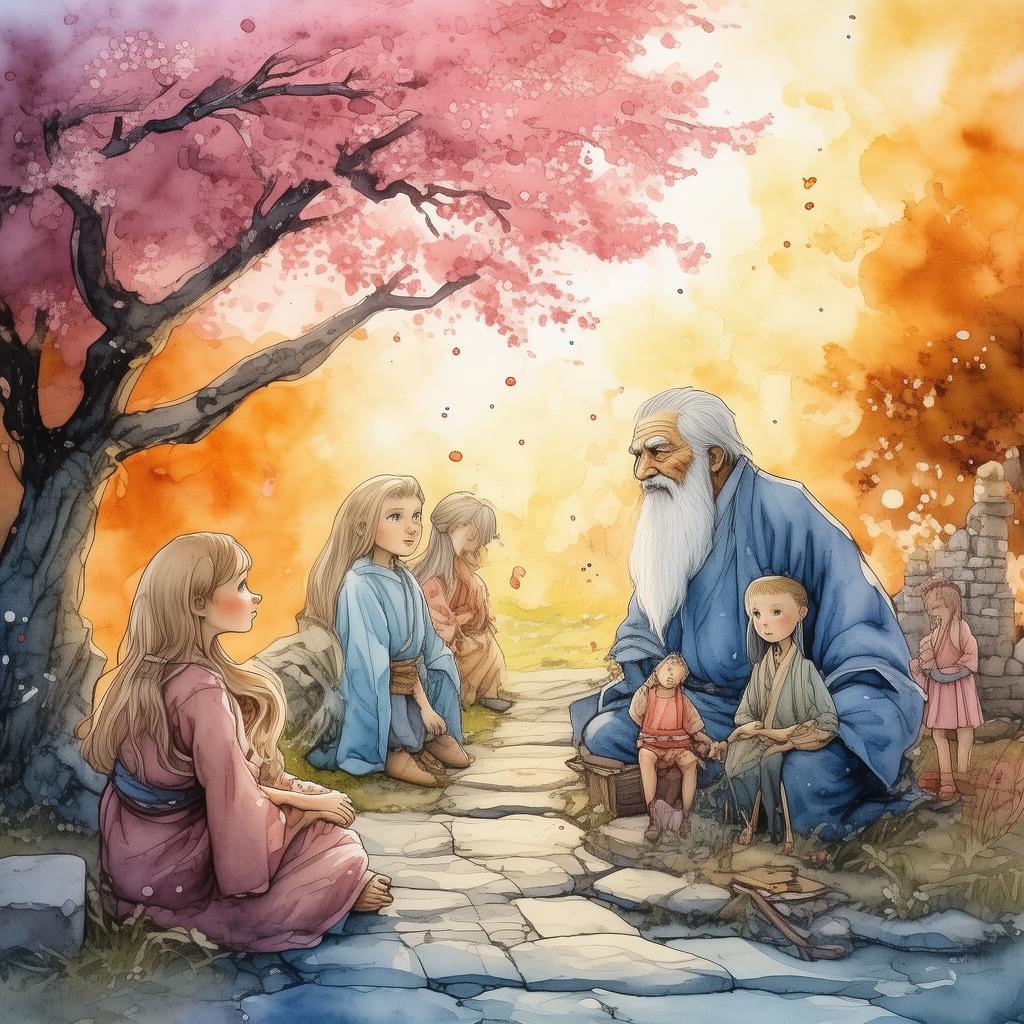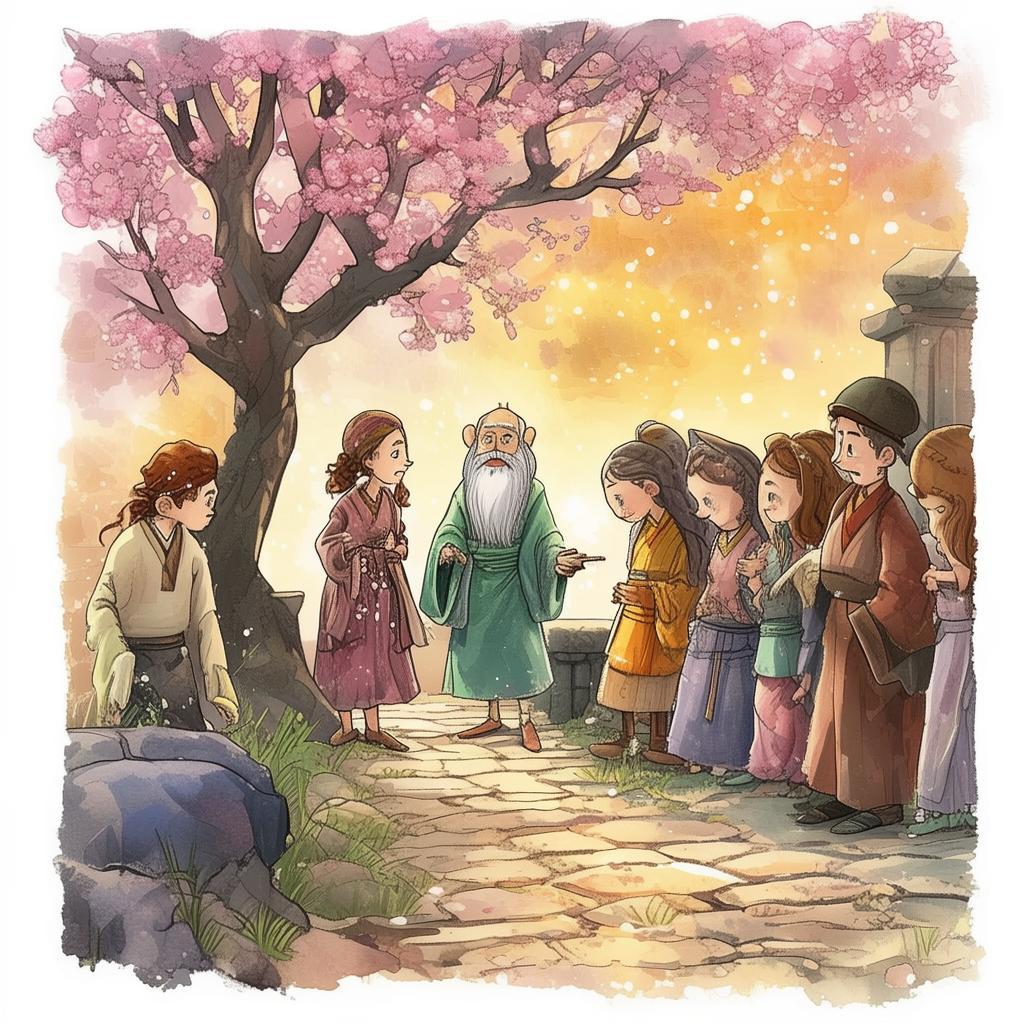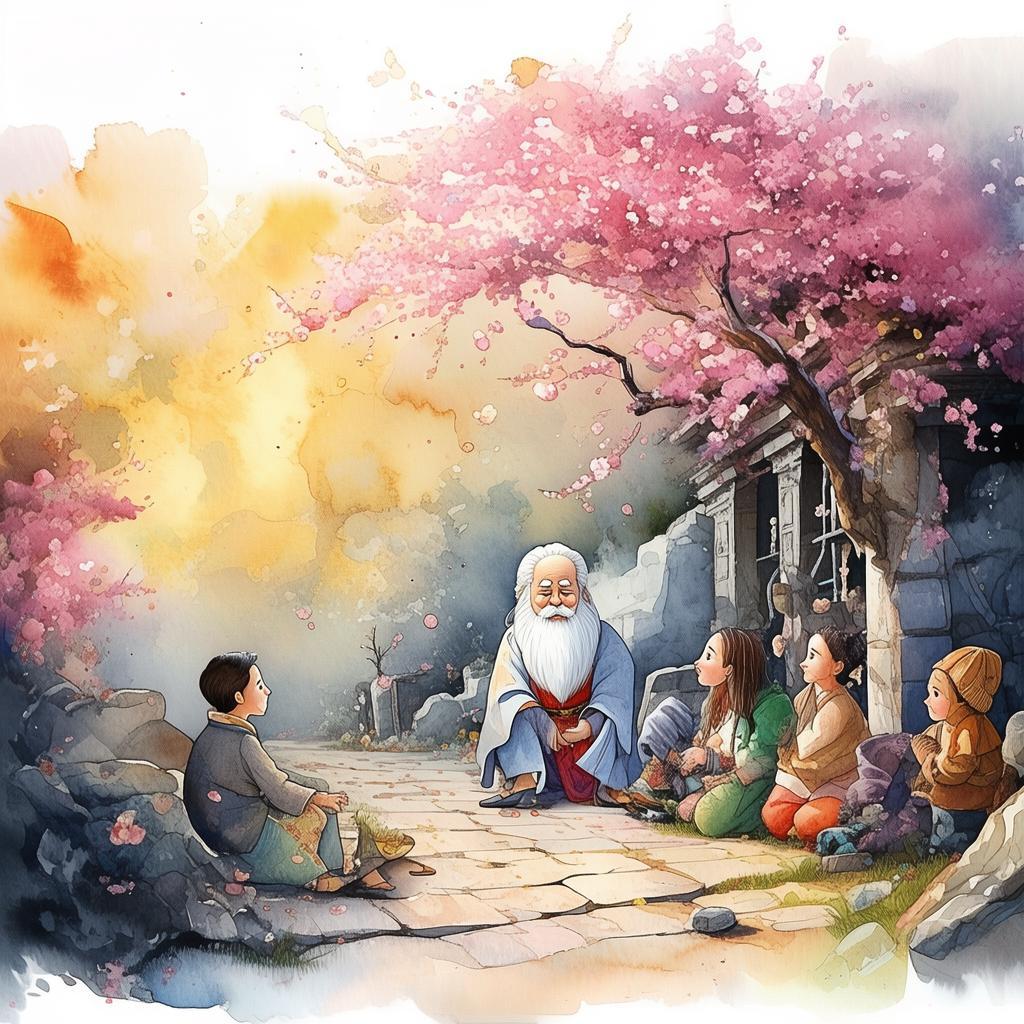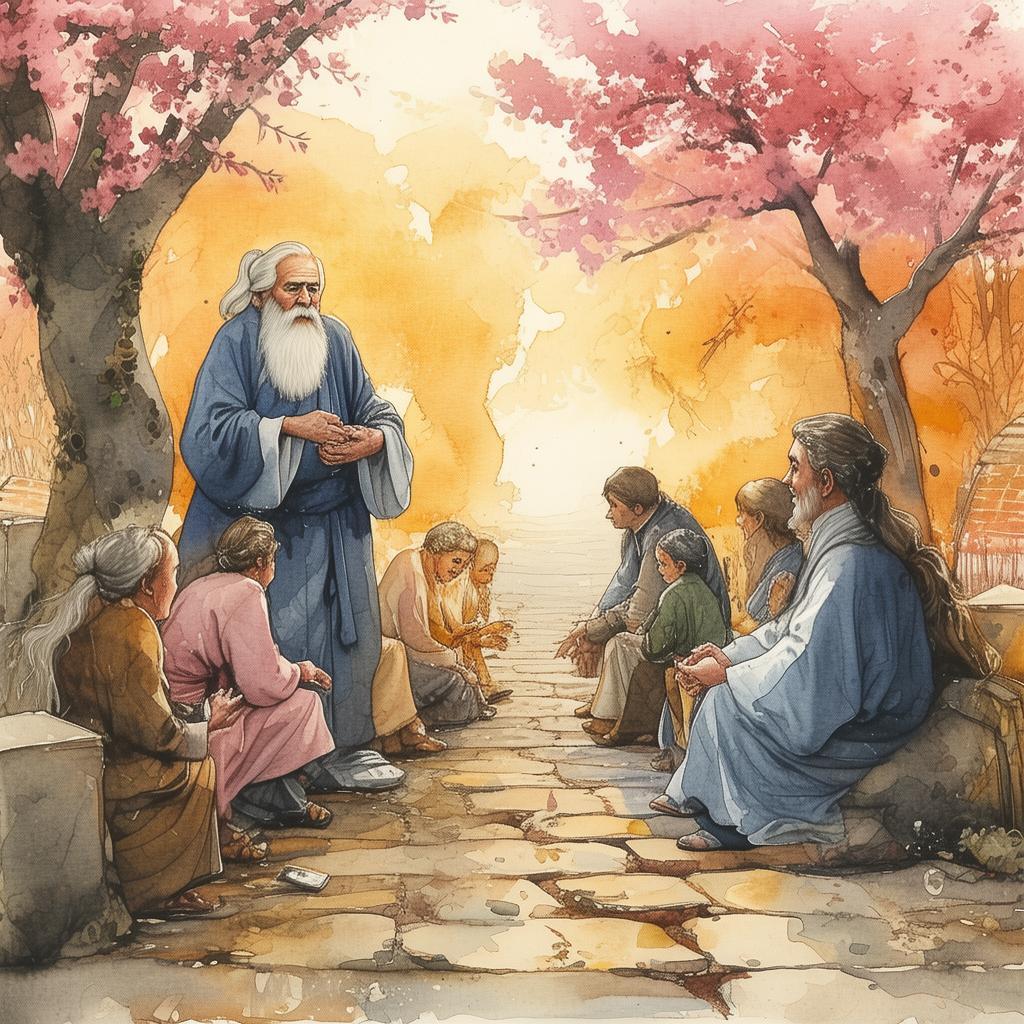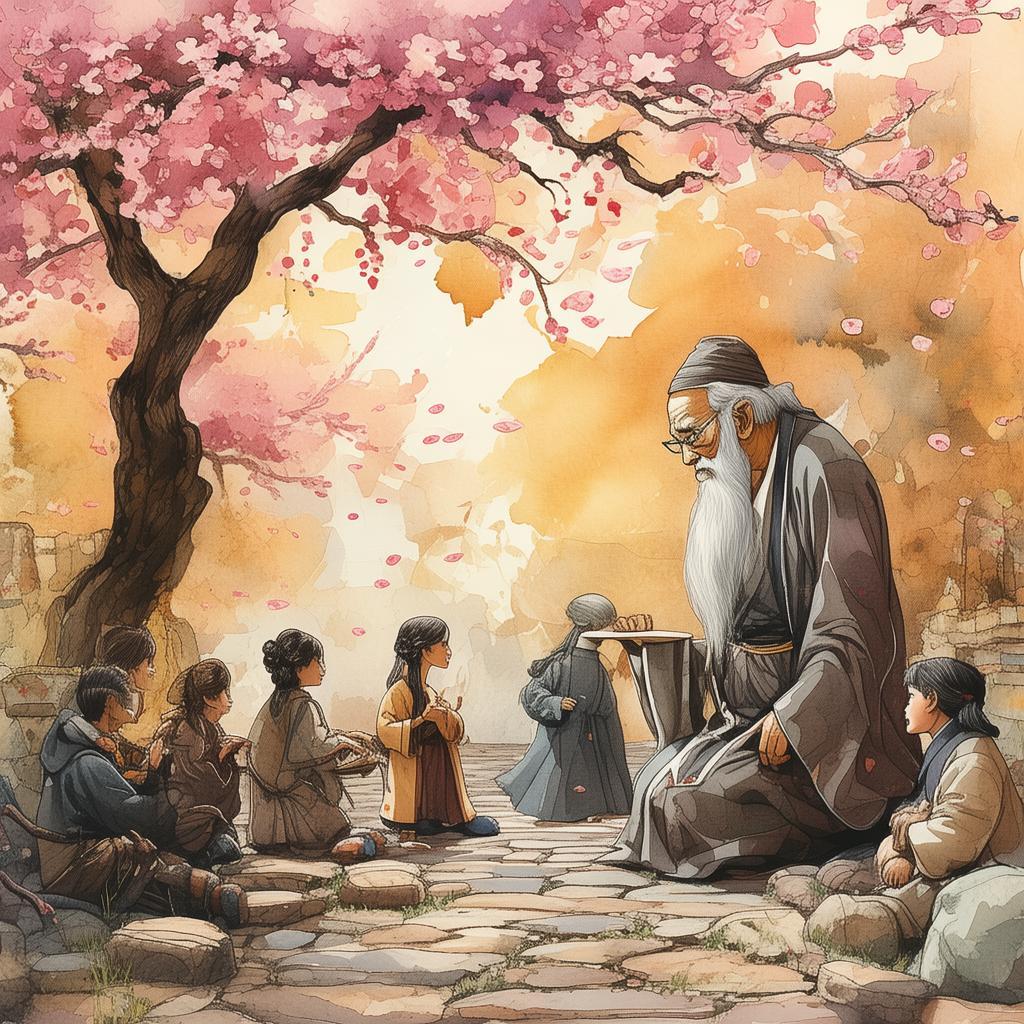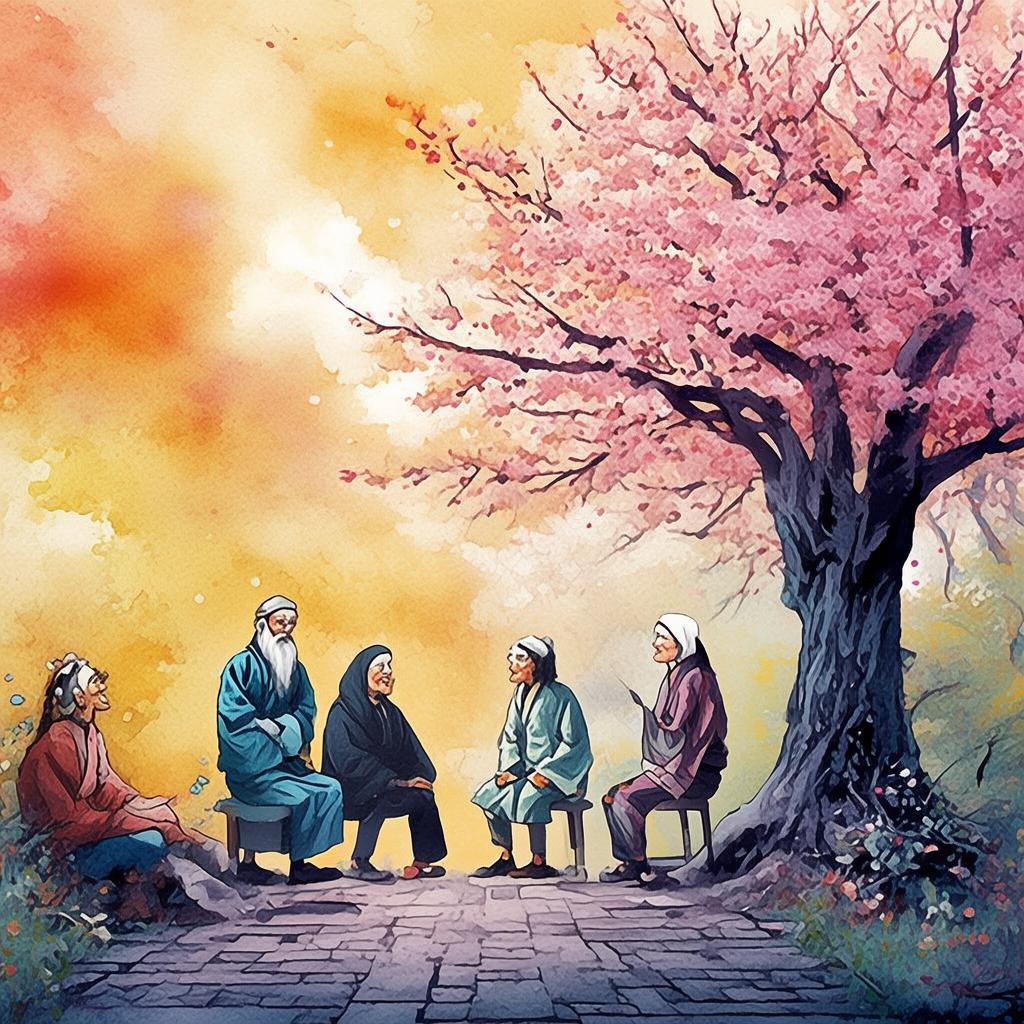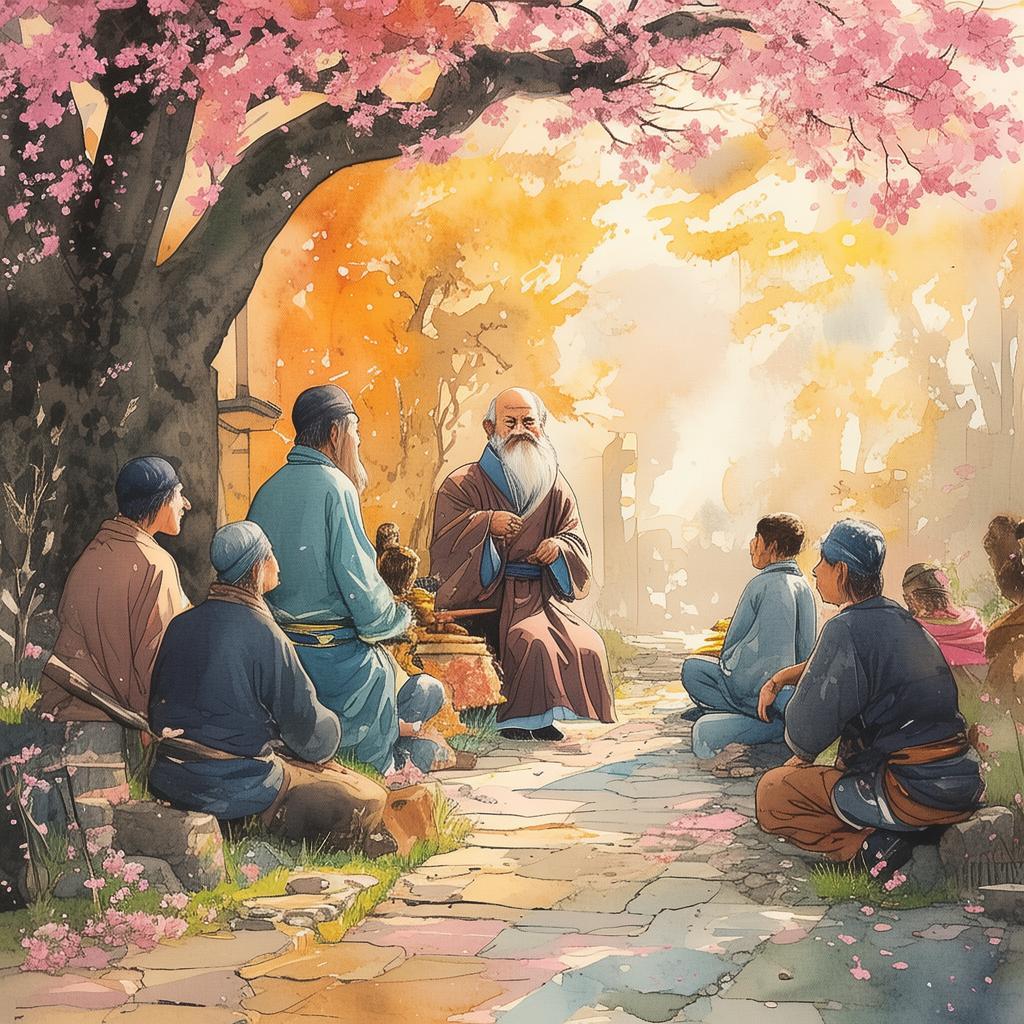The Parallel Worlds of the Starving Artist: A Brush with Eternity
In a quaint little town nestled between rolling hills and whispering forests, there lived an artist named Ming. Ming was not like other artists; his paintings were not of landscapes or portraits, but of moments, emotions, and the very essence of life itself. His brushstrokes were so delicate that they seemed to capture the very soul of the subject matter. People from all over the land would travel to see his masterpieces, which were said to have the power to heal the soul and inspire the heart.
Ming was a starving artist in the truest sense of the phrase. He had no patrons, no gallery, and no money. Yet, he painted with an intensity and passion that defied his circumstances. His studio was a small, dimly lit room at the back of his modest home, filled with the scent of linseed oil and the sound of his breathless sobs as he worked through the night.
One fateful evening, as Ming was painting a scene of a serene lake under the moonlight, he felt a strange sensation in his hand. It was as if the brush was no longer his own, but possessed by a force beyond his control. The paint began to flow with an intensity and grace he had never known, and the scene on his canvas transformed into something extraordinary—a world beyond his own, a parallel universe.
In that moment, Ming realized that his gift was not just to paint, but to bridge the gap between worlds. He could paint the essence of eternity, capturing moments that spanned the breadth of time and space. But with this realization came a heavy responsibility. The parallel worlds he painted were not just reflections of reality; they were gateways to other dimensions, and each painting he created was a portal that could be opened by anyone who beheld it.
Ming knew that the power he held was dangerous. If the wrong person found a way to cross through one of his paintings, the consequences could be catastrophic. Yet, he could not stop painting. The urge to create was too strong, and the parallel worlds he painted were too beautiful to ignore.
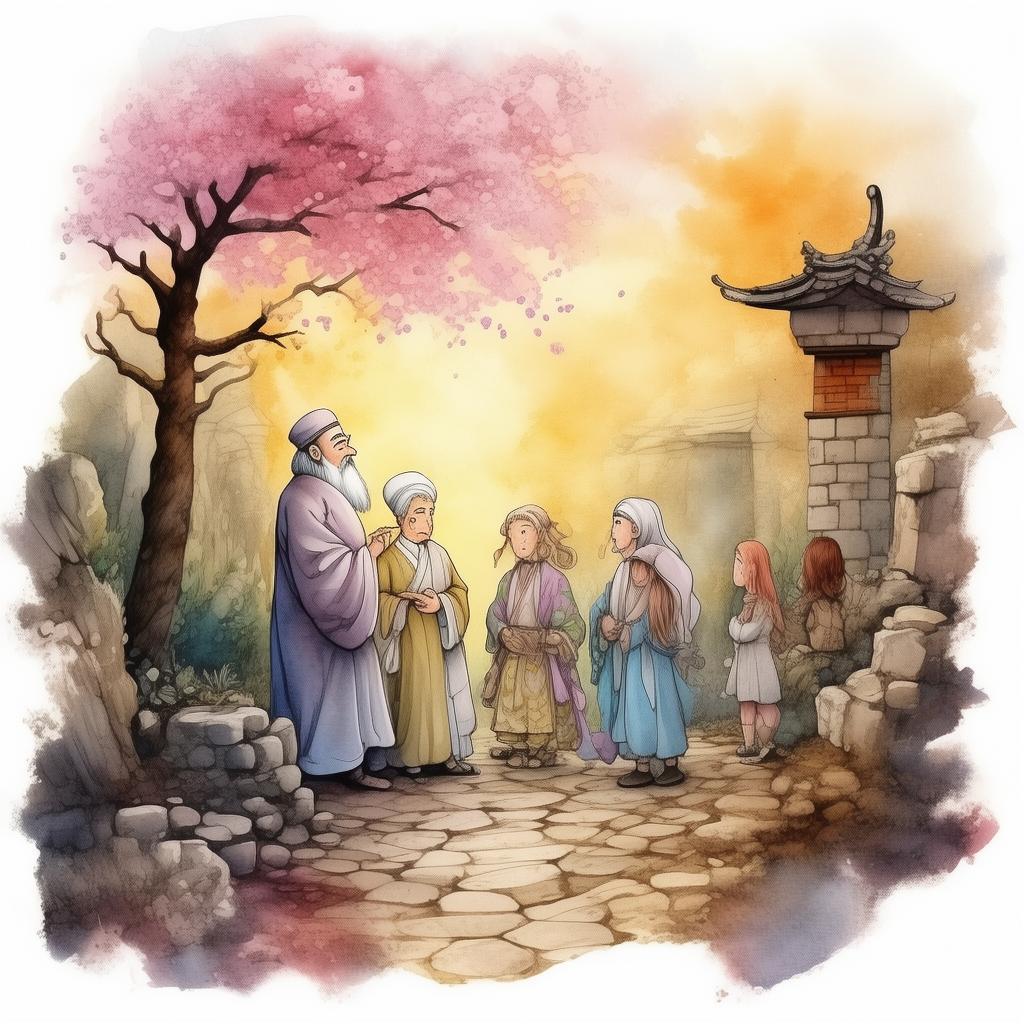
As word of his talent spread, Ming's life began to change. People from all walks of life sought him out, desperate to see the paintings that could heal their souls or inspire their dreams. But Ming was cautious. He knew that not everyone who desired his art was motivated by good intentions.
One day, a wealthy collector named Lord Chen approached Ming. Lord Chen was a man with a greedy heart and a taste for the extraordinary. He offered Ming a fortune to paint a single masterpiece, one that would capture the very essence of eternity. Ming, torn between the desire for survival and the fear of the consequences, agreed.
The painting Ming created was a thing of beauty, a serene landscape that seemed to pulse with life. But as Lord Chen gazed upon it, he felt a strange pull, as if he were being drawn into the very essence of eternity. In a moment of weakness, he reached out and touched the canvas, and with a flash of light, he was gone.
Ming watched in horror as Lord Chen disappeared into the parallel world. He knew that the collector's greed had opened a portal that could not be closed. The parallel world was now a part of reality, and it was teetering on the edge of chaos.
Determined to save the parallel world and prevent it from overwhelming the real one, Ming set out on a journey to find Lord Chen. He traveled through his paintings, crossing into the worlds he had created, and facing the dangers that awaited him in each one. Along the way, he encountered creatures of beauty and horror, and he learned the true cost of his gift.
In the end, Ming found Lord Chen, but it was not the greedy collector who stood before him. It was a being of light and purity, a guardian of the parallel worlds. The guardian explained that Lord Chen's soul had been corrupted by his greed, and it was now trapped in a world of darkness. Ming, with his own soul at stake, agreed to a sacrifice to save both worlds.
With a single brushstroke, Ming painted a scene of purity and light, and the parallel world began to heal. Lord Chen's soul was freed, and he returned to the real world, changed and enlightened by his experience. Ming, however, was left with a heavy heart, knowing that he had given up his ability to paint.
As he returned to his studio, Ming found that the parallel worlds had disappeared. They had been healed, and the balance between the worlds had been restored. But Ming's ability to paint the essence of eternity was gone forever.
He sat down at his easel, his heart heavy, and began to paint. The scene was simple—a single rose, its petals glistening with dew. It was a humble gesture, a return to the basics of art. But as Ming painted, he felt a sense of peace wash over him. He realized that his gift had not been taken from him, but rather, it had been transformed. He could no longer paint the essence of eternity, but he could paint the beauty of the real world, and in doing so, he could inspire and heal others.
And so, Ming continued to paint, his heart filled with gratitude for the gift he had been given and the lessons he had learned. He knew that his journey had not been in vain, and that his art would continue to touch the lives of those who saw it, long after he had passed from this world.
The Parallel Worlds of the Starving Artist: A Brush with Eternity was a tale of sacrifice, courage, and the enduring power of art. It was a story that would resonate with the hearts of all who believed in the magic of creativity and the boundless potential of the human spirit.
✨ Original Statement ✨
All articles published on this website (including but not limited to text, images, videos, and other content) are original or authorized for reposting and are protected by relevant laws. Without the explicit written permission of this website, no individual or organization may copy, modify, repost, or use the content for commercial purposes.
If you need to quote or cooperate, please contact this site for authorization. We reserve the right to pursue legal responsibility for any unauthorized use.
Hereby declared.
